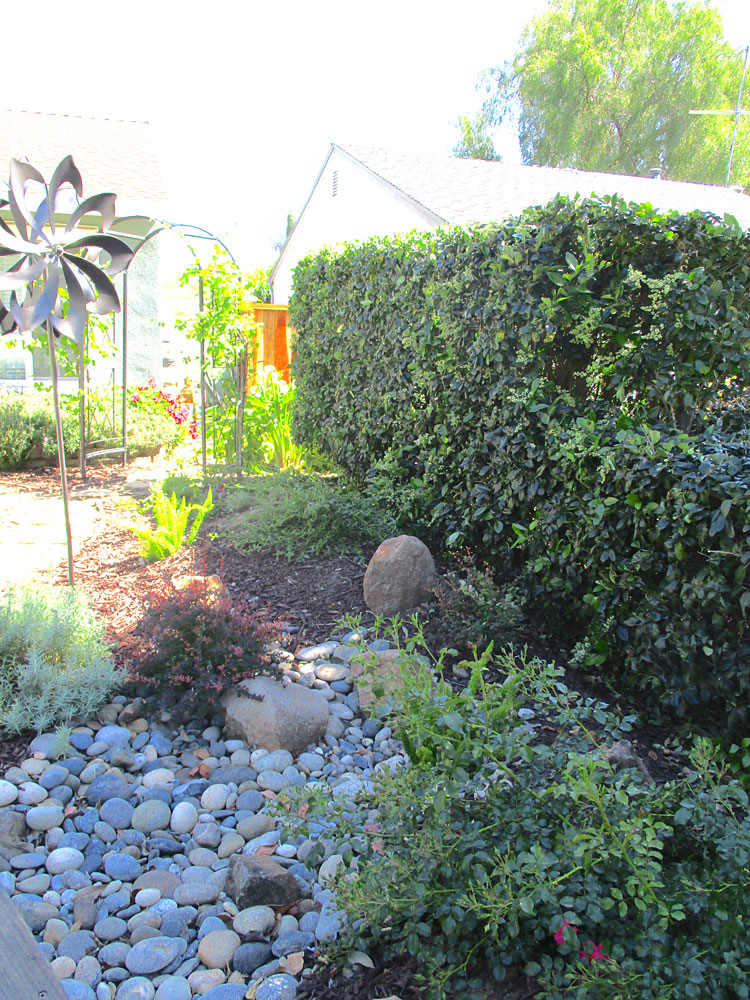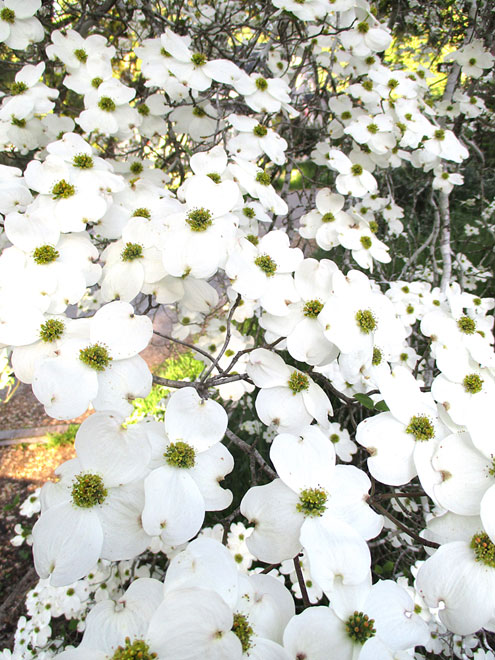 Hedges are a complicated topic! Like lawns, they are among the more functional features of a landscape. They can be used to provide privacy within, obscure unwanted views beyond, or merely to separate a large landscape into cozier or more functional spaces. Except for hedges that are grown for spring flowers or autumn color, most hedges are evergreen with finely textured foliage.
Hedges are a complicated topic! Like lawns, they are among the more functional features of a landscape. They can be used to provide privacy within, obscure unwanted views beyond, or merely to separate a large landscape into cozier or more functional spaces. Except for hedges that are grown for spring flowers or autumn color, most hedges are evergreen with finely textured foliage.
Informal screens, which might also be know simply as informal hedges, can function like hedges, but are a bit different. They are not regularly shorn, so do not need such finely textured foliage. They are either compact plants that stay proportionate to their particular situations, or are grown outside of a refined landscape, where they have plenty of space to grow wild to their natural size.
Although they do the work of fences and walls, hedges do not substitute for them. Fences are relatively ‘low maintenance’. Hedges are quite ‘high maintenance’. They need everything that other plants need, as well as dutiful shearing. Espaliers, trellised vines or vines clinging to fences or walls are also very different, with their own intense maintenance requirements and innate problems.
 Most hedges were shorn late last summer or early autumn, but have not done much since then. They should have been shorn early enough for new growth to toughen up a bit to not look shabby or sparse through winter. Now that hedges are growing again, they will need to be shorn again. If space allows, shearing of photinia hedges can be delayed until the red new foliage fades to green.
Most hedges were shorn late last summer or early autumn, but have not done much since then. They should have been shorn early enough for new growth to toughen up a bit to not look shabby or sparse through winter. Now that hedges are growing again, they will need to be shorn again. If space allows, shearing of photinia hedges can be delayed until the red new foliage fades to green.
While hedges get shorn, any volunteer plants that have self-sown into them must be removed. Different species of shrubs or vines that sneak in will ruin the symmetry. This is also very important when adding new shrubs to replace any that might be missing. Even different cultivars of the same species will exhibit different color and growth rates. The sides of hedges should be sloped slightly inward at the top to allow more sunlight to reach the bottom, and to compensate for faster upper growth.
Dogwood
 Flowering dogwood, Cornus florida, seems like it should be more popular here than it is. It blooms spectacularly in April. The foliage can color nicely in autumn. Mature trees are proportionate to medium sized or smaller suburban gardens. However, the limiting factor to their popularity in the local climate is that they are understory trees that prefer to be in the partial shade of larger trees.
Flowering dogwood, Cornus florida, seems like it should be more popular here than it is. It blooms spectacularly in April. The foliage can color nicely in autumn. Mature trees are proportionate to medium sized or smaller suburban gardens. However, the limiting factor to their popularity in the local climate is that they are understory trees that prefer to be in the partial shade of larger trees.
They certainly do not need to be shaded all day. Nearby trees or tall buildings that shelter them during the hottest part of the afternoon might be sufficient. Foliage that is too exposed gets roasted by hot sunshine or drying breezes while the weather is warm, especially if exposure is enhanced by glare from nearby walls or pavement. Otherwise, flowering dogwood is not overly demanding.
The abundant white, pink or rarely brick red bloom is actually comprised of modified colorful leaves known as bracts. Each cluster of tiny green flowers is surrounded by four upward facing bracts. Simple paired deciduous leaves develop after bloom. The leaves of some cultivars are variegated with white or yellow. Mature trees can reach upstairs eaves but typically stay lower and broader.
•••
Horticulturist Tony Tomeo can be contacted at tonytomeo.wordpress.com.



